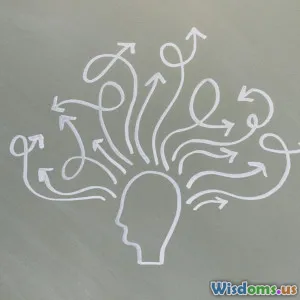
What REM Sleep Reveals About the Biology of Lucid Dreaming
7 min read Explore how REM sleep illuminates the neural mechanisms behind lucid dreaming and what this reveals about our brain’s wakeful mystery. (0 Reviews)
What REM Sleep Reveals About the Biology of Lucid Dreaming
Introduction
Imagine realizing you are dreaming midway through a dream—and then steering it consciously. This phenomenon, known as lucid dreaming, has fascinated scientists and dreamers alike. For decades, the question lingered: what biological processes underpin this rare state of awareness? Research converges on a critical brain stage called Rapid Eye Movement (REM) sleep, and through understanding its mechanics, we unlock crucial insights about lucid dreaming's biological foundation. This article dives deep into the latest science of REM sleep, explores the neurological signatures of lucid dreams, and reveals what this means for our understanding of consciousness and brain function.
Understanding REM Sleep: The Stage Where Dreams Come Alive
REM sleep, first described by researchers Nathaniel Kleitman and Eugene Aserinsky in the 1950s, is characterized by rapid eye movements, vivid brain activity, and muscle atonia (paralysis). Typically constituting about 20-25% of total sleep in adults, REM sleep supports memory consolidation, emotional regulation, and cognitive restoration.
The Neurological Signature of REM
During REM, brain waves resemble waking states, particularly in the cortex regions involved in sensory perception and emotion processing. The prefrontal cortex, responsible for higher cognitive functions such as decision-making and self-reflection, remains less active than during wakefulness — explaining why dreams often feel illogical or bizarre.
However, when it comes to lucid dreaming, this cortical activity shifts, creating a unique blend of wakefulness and dreaming.
The Neuroscience of Lucid Dreaming: REM’s Special Role
A Hybrid Brain State
Research employing polysomnography and functional magnetic resonance imaging (fMRI) has shown lucid dreams predominantly arise during REM sleep but involve enhanced activity in the dorsolateral prefrontal cortex (DLPFC) — the brain region usually quiet during non-lucid dreams.
Psychophysiologist Ursula Voss and colleagues in 2009 provided some of the first imaging evidence highlighting this. Their study found increased gamma wave activity (40 Hz oscillations), associated with conscious awareness, in lucid dreamers during REM phases.
Gamma Brainwaves and Conscious Control
Gamma waves correlate with cognitive processing, working memory, and consciousness waking states. Their presence during lucid REM sleep suggests the brain taps into its waking cognitive capabilities, allowing dreamers to recognize the dream state and exert some control over their dream narrative.
Real-Time Communication During REM
Remarkably, in landmark experiments led by sleep researcher Stephen LaBerge, lucid dreamers signaled to researchers via predefined eye movement patterns during REM. These controlled eye movements offer direct proof that despite dreaming, parts of the brain maintain alertness and voluntary control.
Biological Mechanisms Facilitating Lucid Dreaming
Neurotransmitters and Lucidity
REM sleep regulation involves key neurotransmitters like acetylcholine, serotonin, and dopamine. Acetylcholine levels surge during REM, heightening cortical activation and possibly supporting dream vividness and memory formation. Experimental elevation of acetylcholine via medications like galantamine has been shown to increase the likelihood of inducing lucidity.
Dopaminergic circuits, linked to reward and motivation, are also implicated. Dopamine may enhance metacognitive awareness, increasing one's ability to reflect on the dream state.
Brain Metabolism and Connectivity
During lucid dreaming, brain imaging studies reveal increased metabolic rates in frontal areas, especially the precuneus and parietal lobes—regions integral to self-awareness and visuospatial processing.
The default mode network (DMN), a brain network activated during introspection and self-referential thoughts, displays altered connectivity during lucid REM. This modified network dynamics is thought to underpin lucid dreamers' awareness of their own mental state.
Practical Insights and Applications
Training Lucid Dreaming
Understanding REM’s neural underpinnings aids in developing lucid dreaming techniques, such as reality testing and mnemonic induction, which often capitalize on disrupting typical REM inactivation of self-awareness circuits.
Moreover, pharmacological agents like galantamine, combined with sleep protocols that increase REM duration, have improved success rates in controlled studies.
Therapeutic Potentials
Lucid dreaming’s rootedness in REM sleep biology encourages clinical applications: reducing nightmares in PTSD sufferers by consciously altering dream scenarios, or harnessing lucid dreams to practice motor skills in Parkinson’s disease rehabilitation.
A Window Into Consciousness
Lucid dreaming provides a natural, safer lab model for exploring consciousness, bridging the gap between waking awareness and unconscious processes. As neuroscientist Stephen LaBerge remarked, lucid dreaming “offers a unique opportunity to study the relationship between brain physiology and consciousness.”
Conclusion
REM sleep is not just the birthplace of our nocturnal stories but is a sophisticated neural stage where consciousness can flicker and even awaken within dreams. The biological signatures uncovered—heightened prefrontal gamma activity, neurotransmitter modulation, and specialized brain network connectivity—give compelling evidence of lucid dreaming as a hybrid conscious state deeply linked to REM mechanisms. This understanding not only advances neurological science but opens doors to innovative therapies and deeper inquiries into the human mind’s ultimate mysteries.
By continuing to unravel how REM sleep orchestrates lucid dreaming, we inch closer to understanding consciousness itself—whether awake or dreaming.
Rate the Post
User Reviews
Popular Posts




















